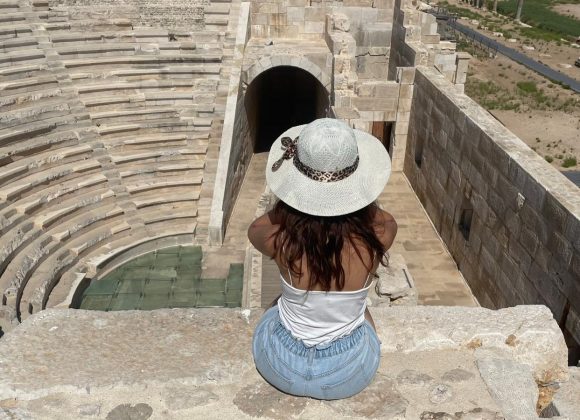Table of Contents
Each time I travel to ancient theatres, I feel their history from centuries gone by focused through a lens. I imagine the whole area in a soft, breezy glow. The ancient spectators seem to be cheering in perfect synchrony. The theatres of Side, Myra, Patara, Perge, Aspendos, and Termessos come to life to me as dancers emerging from the mist. The spectacular beauty of these theatres makes me feel connected to the distant past. The ancient audience applause rings through the ages, and I reach out to touch the stories hidden deep in each theatre. Let’s dive into the ancient theatres in Antalya.
Apollo – A Theatre by the Sea and the Temple of Apollo
The Roman theatre of Side, with its semicircular seating.
My adventure in the lenced port city of Side ‘Antalya’ started with walking off the ancient roads where I met with the Side Amphitheater as well as the Mediterranean Sideage of the City Sightseeing with an unparalleled setting in the form of the Sideage of the Apollo Temple.
As of today, Side Amphitheater is one of the most distinguished archaeological sites of the Roman civilization in Turkiye and the only amphitheater up to now, which has only one level of catwalks, a Roman Age logistics of which is of great interest up to now. ‘Side’ which means the pomegranate in the ancient language however the Side Amphitheater has a capacity of up to 15,000 spectators and the pomegranate means the amphitheater is bursting with life.
285 Dash banana fully in my stride and 15,000 pairs of ecstatic hands winning me over. I would simply put my phone in the charge keeper and chew off the unleavable view. I managed to feel each of the ancient Roman wins in the multipurpose Side Amphitheater, full of gladiators, horsemen, and gladiatrixes. Within the encase of dense like blue hopefuls of the sea, the Side Roman Temple has one of the most splendid views and calms the giddy of restless hearts, which I for once labrador like a slips.
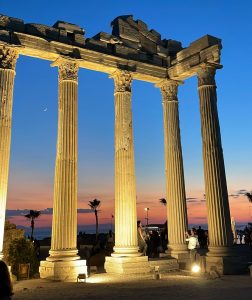 Source: Photo by me
Source: Photo by me
Myra – Echoes of Lycian Applause
Traveling off the main road, I made my way to Myra (Demre in modern days), another city in ancient Lycia known for its rock tombs and sizable theater. The Myra region has such an incredible view; it is often featured in guides. However, guidebooks do not do an adequate portrayal to capture the imagery Myra has to offer.
Restoration to the Myra theater, expanding its original structure, was completed during the Roman period. It was constructed in the Hellenistic period and drastically improved upon during Roman times. Its size is another astonishing detail; it has the capacity to host between 10,000 and 12,000 people. What astounded me the most, was learning that the theater suffered an earthquake in 141 AD that completely shattered it. The people of the Myra region are indeed strong; in the early 3rd century AD, the reconstructed beloved theater allowed for performances to continue.
Along with being a bishopric for Saint Nicholas, Myra was once an affluent Lycian city. The resemblance of St. Nicholas to the Santa Claus is not the most astonishing part of this region. The ancient St. Nicholas of Myra had ties to mystrious and compelling tales, and that is what I find astonishing.
The city’s importance showed in its theatre’s scale and ornamentation. I spotted carved theater masks and Medusa heads among the fallen stones.
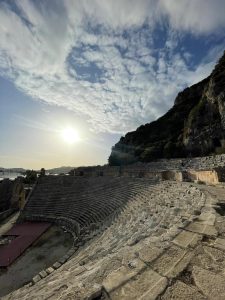
Patara – A Stage Reborn in Sand and Time
From there I went on to Patara, another Lycian city, this one more infamous for its theatre, as well as for being the cradle of democracy in the region (Patara was the capital of the Lycian league). Patara’s theatre lies just inland from Turkiye’s longest beach, tucked against a sandy hill. In fact, for centuries, it was buried in dunes, talk about nature preserving history!
Patara’s theatre has a more intimate feel than Side or Myra, but it’s still impressively large. Its diameter is about 81 meters, and it once held around 5,000–6,000 spectators.
Patara was for me a discovery of history, with the Roman-built amphitheater and its surrounding Hittite foundations, Greek folklore, and Christian remnants.
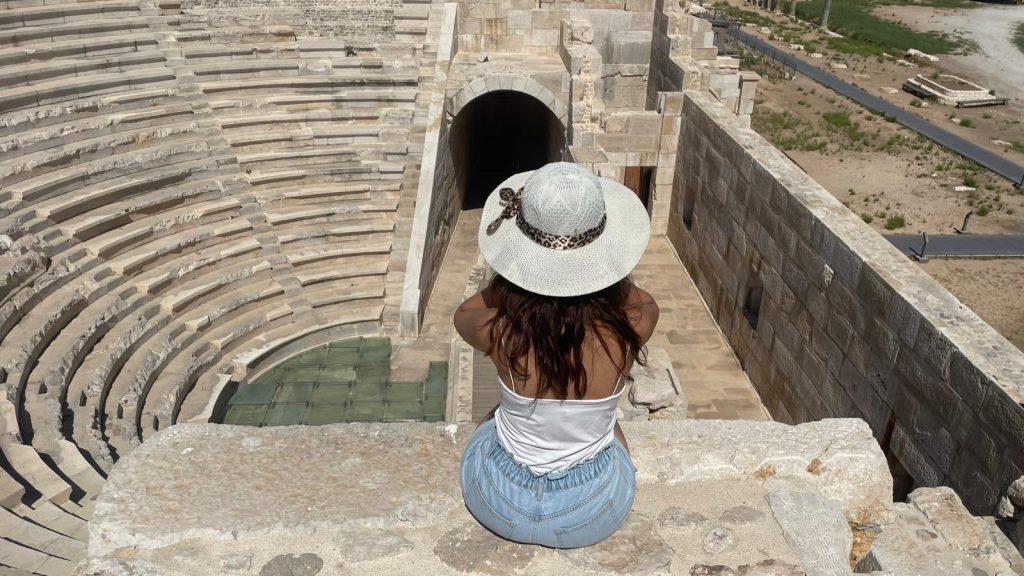
Perge – Marble Stages and Marble Streets
The Aspendos Theatre remarkably remains intact and is well preserved, even amongst modern influences. Ever since it was built in the 2nd century AD, it has retained and managed to shelter the entire grand facade and the seating area. It has survived through the test of time and is amongst the best preserved Roman theatres in the world. It is situated near Aksu in Antalya, and is known to be the best preserved Roman theatres. The Myra and Patara theaters have been known to be the top some to have survived the test of time, however even in the semi-ruin stage, the theater in Perge happens to be the largest of them all, greatly exceeding in size than those of Myra and Patara.
Perge has found to be a stage in the world, where people come to recreate and learn about the history. Walking around the Perge theater was not so much walking around, but rather a stage to see my very own puzzle pieces being constructed. Most of the amazing friezes that can be found lying around have been known to be moved to the Antalya museum for safekeeping, along with other relics.
Yet I also imagined the earlier days when the same space hosted tragedies and comedies under the open sky. Perge’s theatre encapsulates the dual nature of Roman entertainment, high culture and blood sport, all in one venue. After soaking in the atmosphere, I wandered the rest of Perge’s ruins (baths, agora, stadium), but the memory of that theatre, massive, once lavishly decorated, and bustling with life, stayed with me as a highlight of Perge.
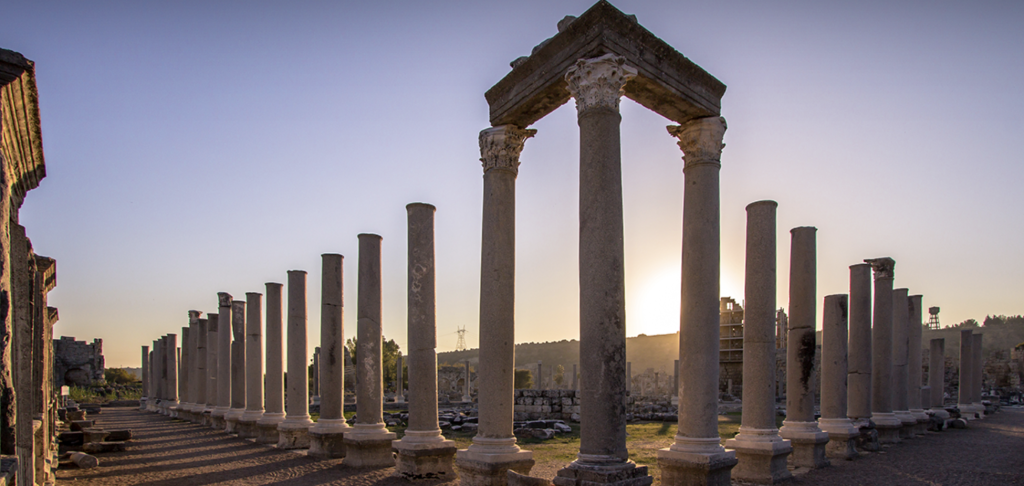
Aspendos – The Crown Jewel of Roman Theatres
Almost every visitor to Antalya will come across the ancient city of Aspendos and the Roman theatre that is often cited as the most well-preserved ancient theatre alive today. There is little doubt that this January 2nd theatre was built during the time of the Emperor, Marcus Aurelius, and between the years 161 to 180, for this theatre is almost the exact same fashion today.
As I visited during the late afternoon, the sun was illuminating the theatre in the same way it would in ancient times. Aspendos would seemingly ‘freeze in time’. The stage is over 750 square meters, and the 41 rows of semicircular seats accommodate an astonishing 12,000 spectators.
The almost 100-meter theatre itself, is fully preserved. As Hogarth claimed, “You may be sated with antiquity… but you have not seen the theatre of Aspendos,” and I think I can say the very same.
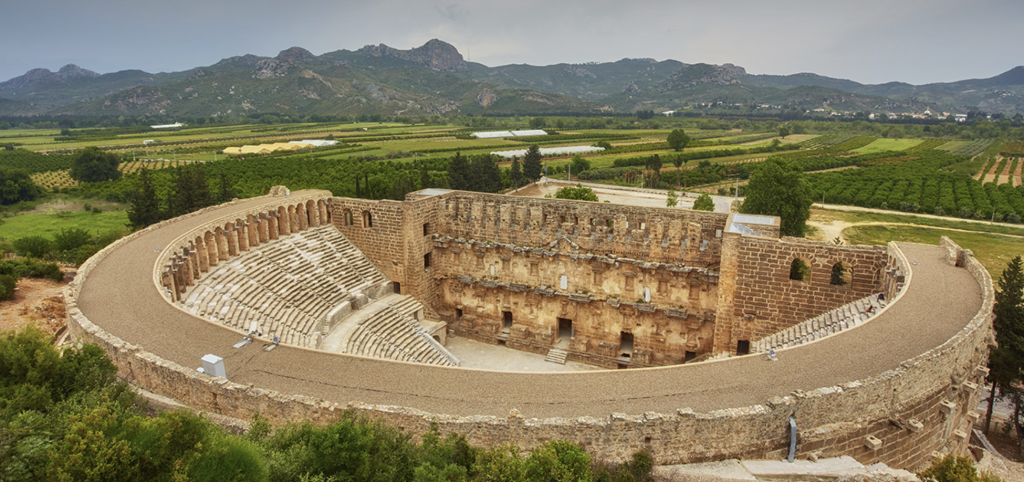
Termessos – The Eagle’s Nest Theatre
Known to still have an ancient theatre in its region, it is one of the more pictured spots. This makes the city a bit of a hike. The region can also be reached via a more mountainous road and a steep walking path. This is much more rewarding. The ancient theatre is something of a spectacle. The view is in a class of its own. Whenever, and however it is viewed, it will truly remain a site to behold.
Termessos’s theatre might not be the biggest (capacity is estimated around 4,000–5,000 spectators ), but it’s surely one of the most dramatically situated. It’s no wonder Alexander the Great bypassed attacking Termessos in 333 BC, calling it an “eagle’s nest” that even his army couldn’t conquer. The city’s natural defenses are obvious: sheer cliffs and mountain walls protect it.
It struck me how untouched Termessos felt. Unlike Aspendos, there are no crowds or concert lights here; it’s just you and the ghosts of an ancient city in the clouds.
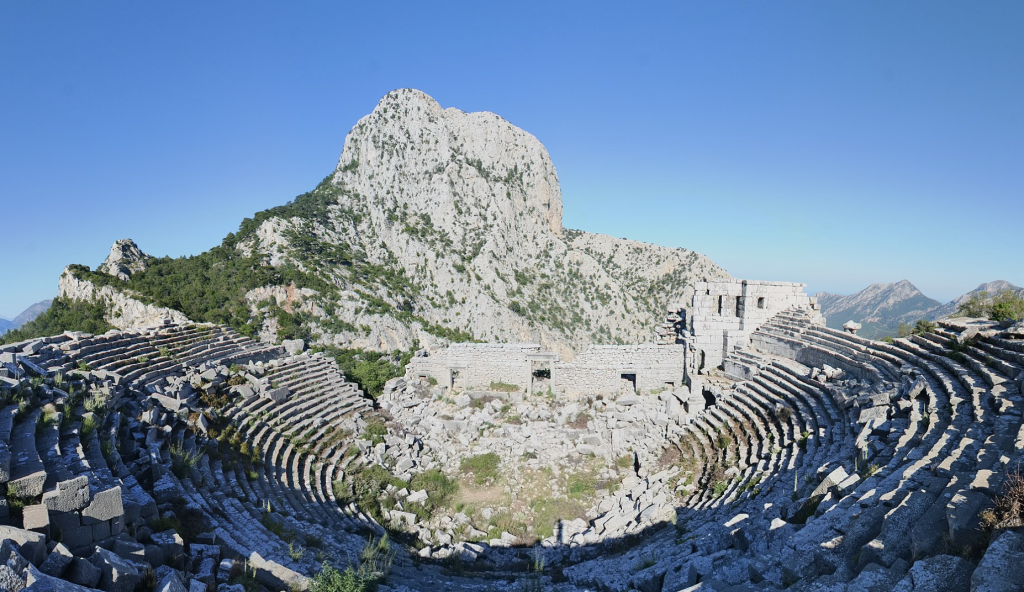
Source: Photo by Ingo Mehling, CC BY-SA 3.0, via Wikimedia Commons
Last Stages of Civilization
I still vividly remember the ancient theatres of Antalya that I visited. I understand that every theatre has its special characteristics and array of stories. The timeless and eternal Blue of the Side and the castle standing tall above it. The Myra’s legacy and the so dearly embraced and loved masterpiece. The soft sand of the Patara, beautiful, along with the Perge castle. The ever-glorious Aspendos. The located Termessos, sealed in its own vapor of solitude. Each theatre helped broaden my horizons. These remarkable stone structures have been around for centuries, witnessing much of history. They have seen the reign of emperors and the passages of apostles. Chosen to provide entertainment, gladiators of combat, and the common folk, along with those merely traveling. There is much more to it than a sight of beauty. These structures have been made with history submerged under each stone.
The ancient theatres have served their purpose and still stand tall for the next generation to appreciate, as those in my time have. Should the opportunity arise to visit the southern region of Turkiye, ‘taking a seat’ as a spectator is an experience that certainly should not be missed.


